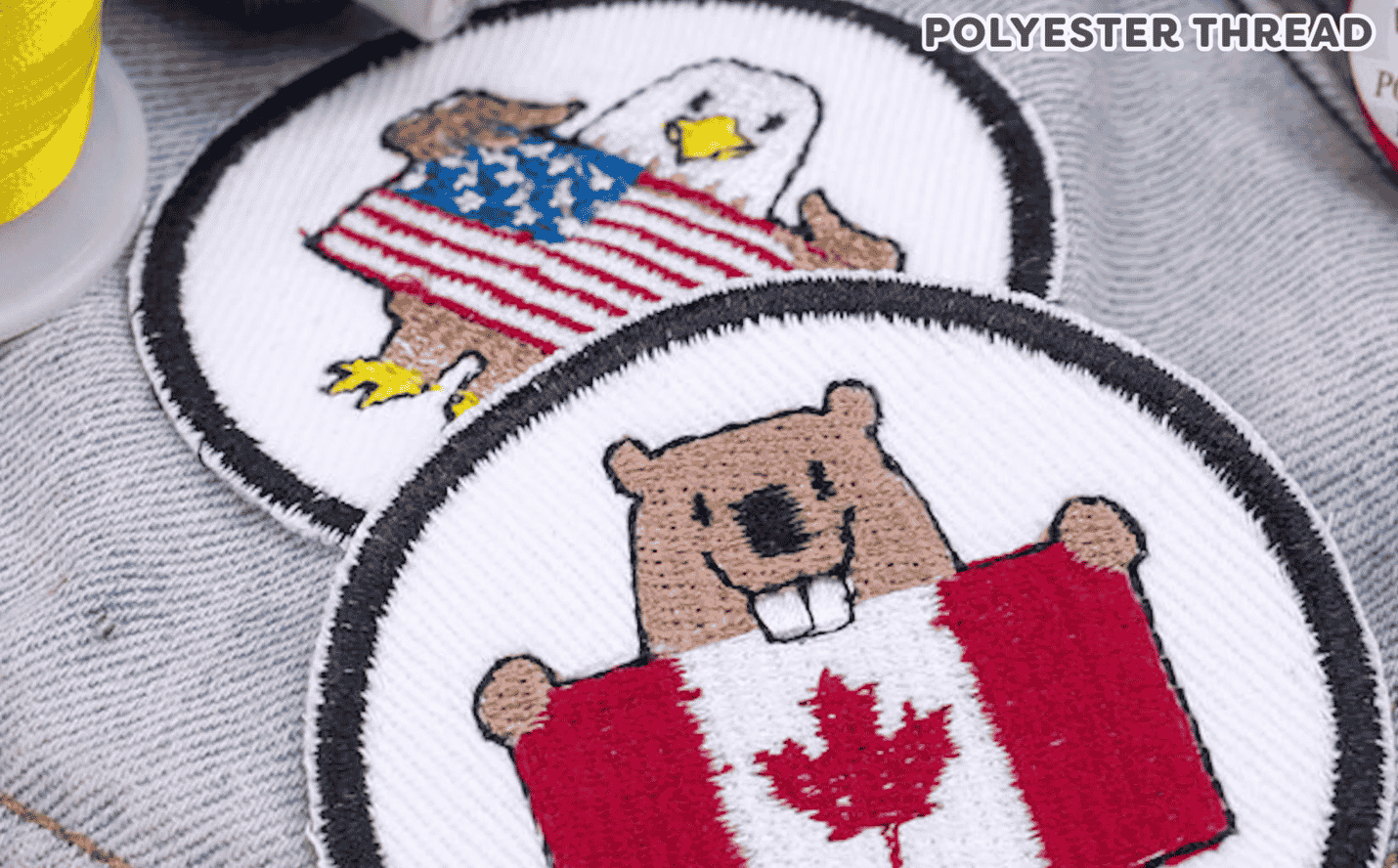Both rayon and polyester are an excellent choice depending on what you want to achieve in your project, but we’ll discuss when to choose one over the other as they both have their own unique qualities and benefits. We’ll discuss the finish, tactility, purpose, and additional factors to consider when sewing with each type.
WonderFil manufactures both rayon and polyester threads. We’ll be looking at the two with the most similar uses: Splendor™, a 40wt rayon, and Polyfast™, a 40wt trilobal polyester.

While rayon and polyester are used in many of the same techniques, they both have very different origins. Rayon is manufactured from wood pulp that is chemically dissolved and undergoes a multi-step process resulting in the soft, lustrous rayon fibres. Polyester on the other hand, is a synthetic material with long, stable fibres that gives it the strength it is best known for. It’s resistant to abrasion and many common household chemicals, including bleach, making it a reliable choice for almost any application.
Rayon is fairly universal in its appearance and finish, however polyester can come in many forms. You might come across terms such as “cottonized polyester”, “wooly poly”, “all-purpose polyester”, or “trilobal polyester”. While these are all polyester threads, they vary greatly from each other in terms of where they are used and how they appear. Trilobal polyester is the most comparable to rayon in appearance and use. Both materials are (usually) colourfast and safe to iron if it comes from a reputable manufacturer.
If you’d like to learn more about the different kinds of polyester thread out there, check out our other blog: Exploring Polyester Thread: Varieties, Differences, & Where to Use Them.
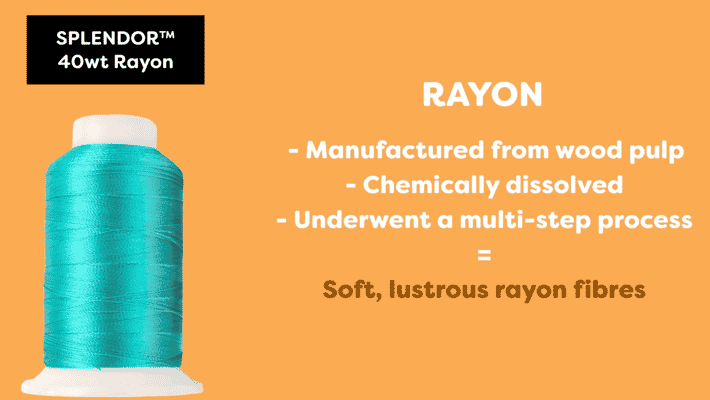
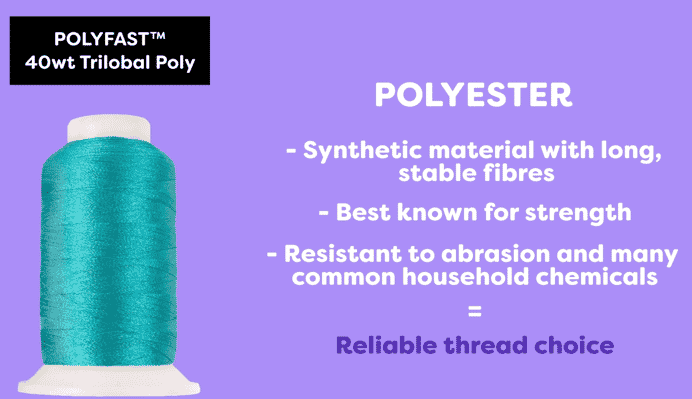
Let’s take a closer look at rayon. It has a natural gloss that carries across the stitching or embroidery. Whereas polyester has an artificial gloss where the light is more fractured in appearance.
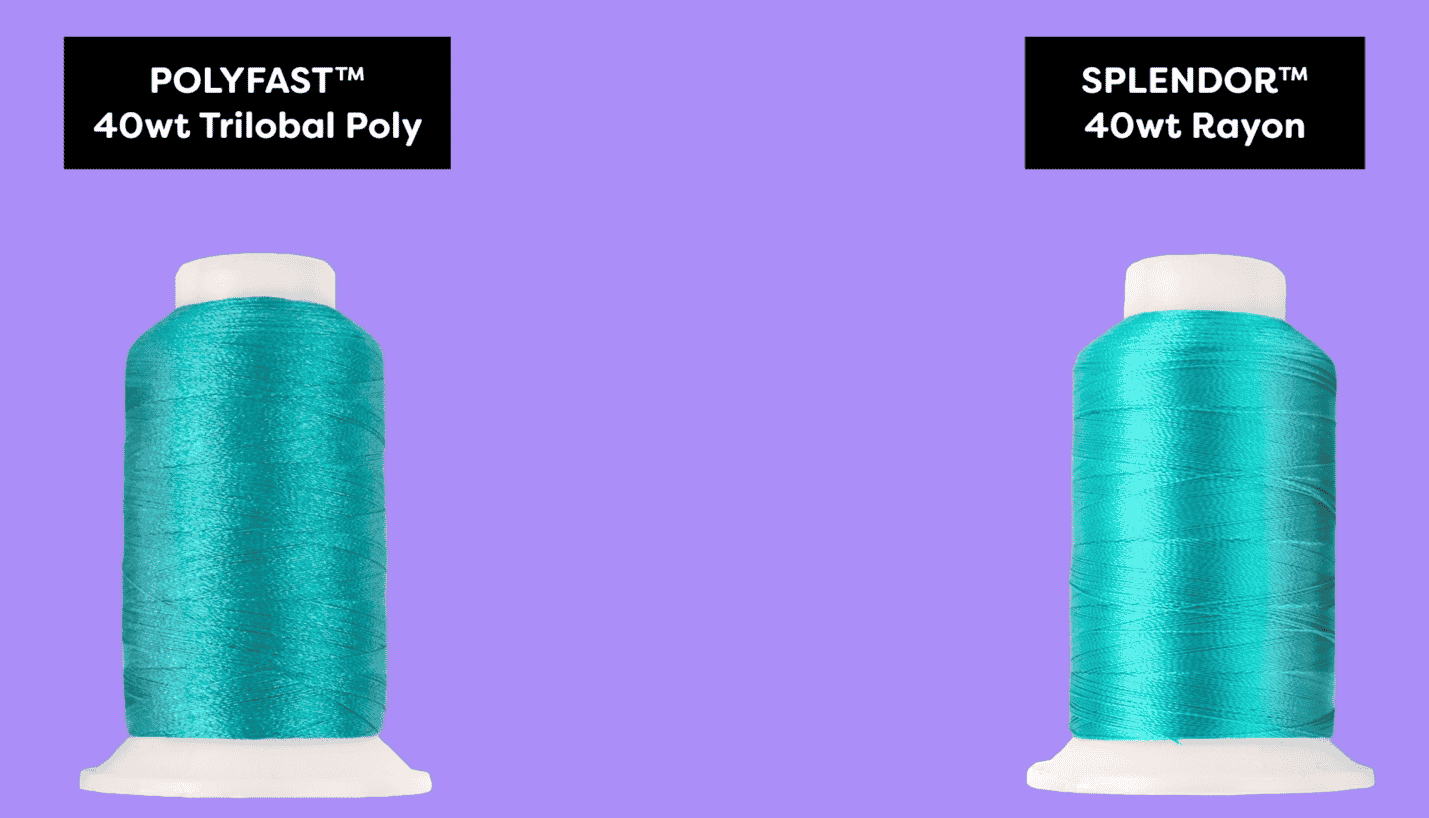
Comparing their tactility, rayon is actually softer to the touch in comparison to polyester. This leaves your fabric more flexible if you were to densely stitch with it. Polyester is rougher to the touch compared to rayon, and leaves the fabric feeling stiffer when densely stitched.
So now that you’ve learned the characteristics of each thread, which thread material should you choose?
We don’t recommend using rayon if you require the project to endure abrasion, long periods of moisture or bleach/chemicals. This is because rayon is a material that weakens when exposed to moisture. Rayon will always make a beautiful impression wherever it’s sewn and is a popular choice for this reason. It’s a gorgeous choice when used for decorative purposes, such as appliqué or decorative quilting and not for holding quits together structurally, such as edge to edge quilting. Choose it for quilting small areas or appliqué on a bed quilt, or used in projects that won’t be subjected to a lot of washing and handling. For example, quilting wall-hung quilts or art quilts.
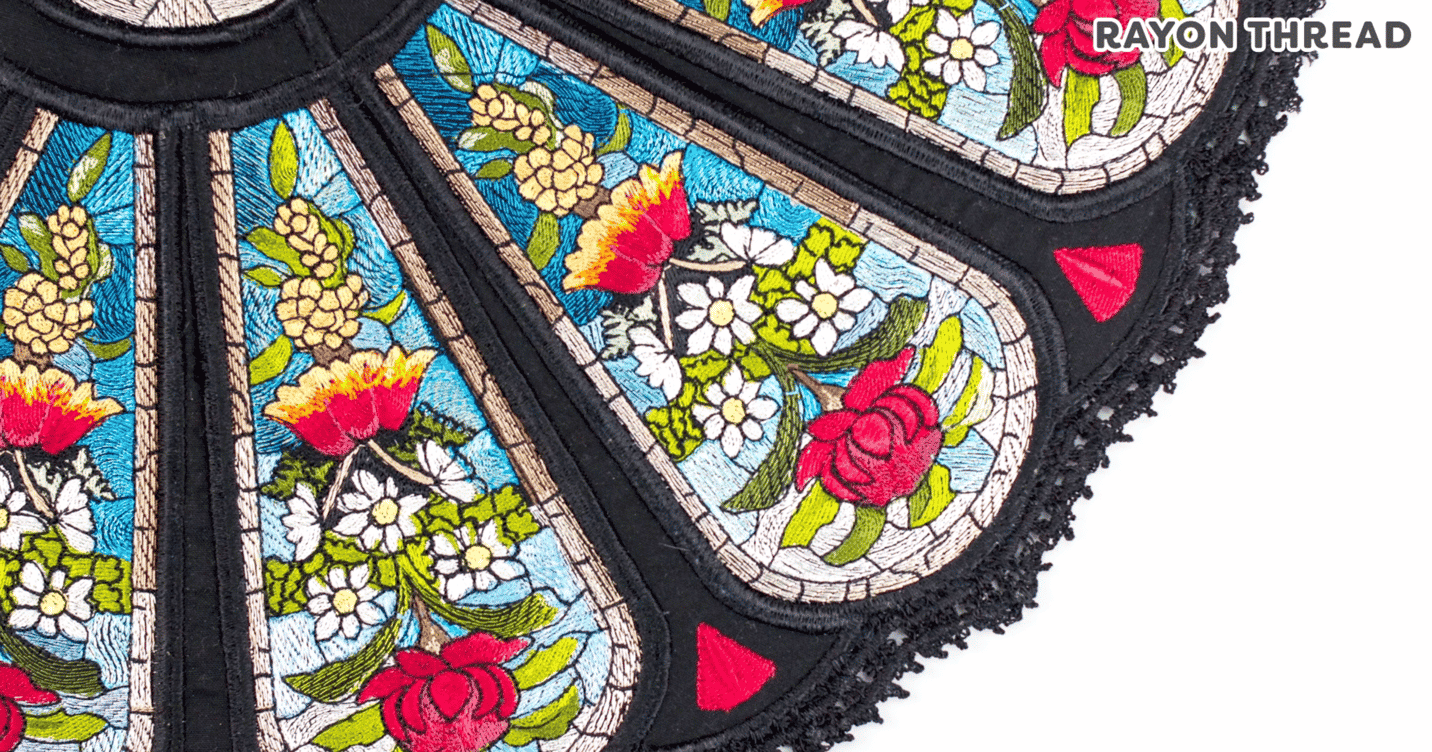
Polyester has resistance to bleach and can handle light bleaching. It can also handle abrasion, mildew, and most chemicals it encounters. However as it does have a tendency to feel less soft and smooth to the touch, and leaves fabric a little stiffer. This material also keeps its strength even when exposed to moisture and is a reliable thread to hold your projects together when used for construction. This makes it ideal for edge to edge quilting, piecing, or other structural purposes. You can also consider it if you plan on embroidery patches on a backpack or items exposed to the elements.
